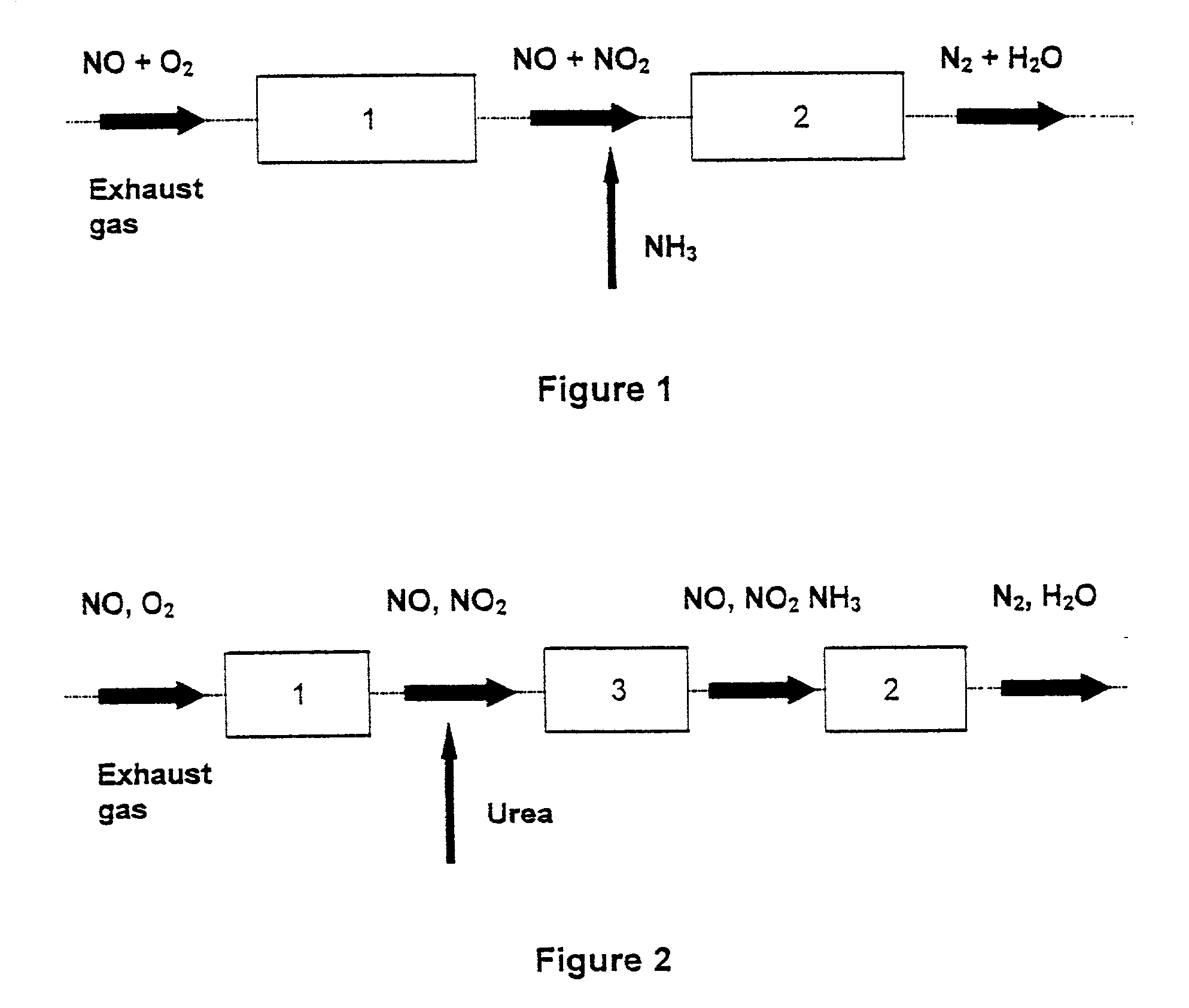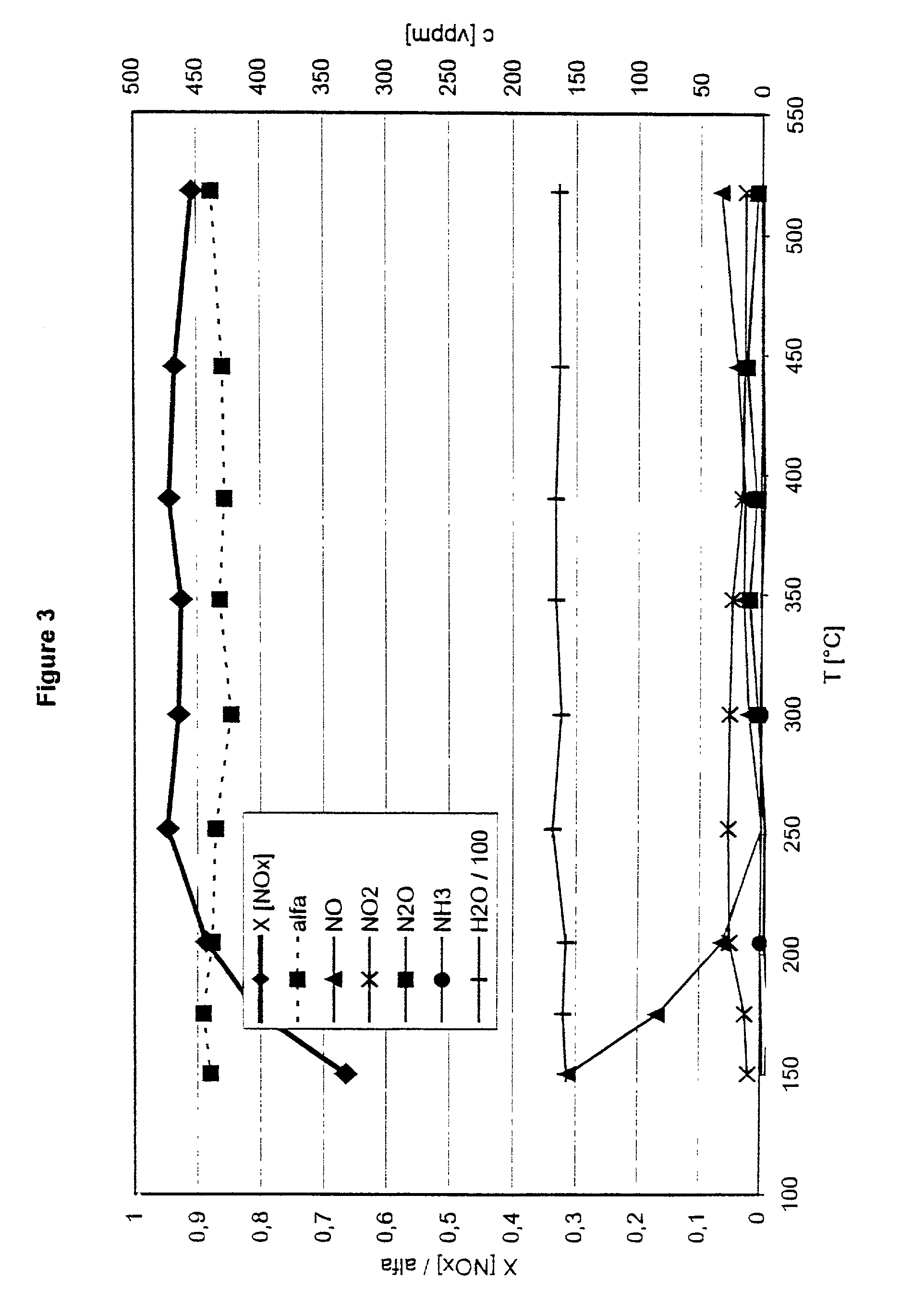Process and catalyst for reducing nitrogen oxides
a technology of nitrogen oxides and catalysts, applied in the direction of nitrogen purification/separation, inorganic chemistry, exhaust treatment, etc., can solve the problems of toxic vanadium compounds at elevated exhaust gas temperatures, high catalyst activity, and high catalyst activity
- Summary
- Abstract
- Description
- Claims
- Application Information
AI Technical Summary
Benefits of technology
Problems solved by technology
Method used
Image
Examples
Embodiment Construction
[0039] Drilled cores of these catalysts with a diameter of 2.54 cm and a length of 7.62 cm were subjected to the following synthesis gas mixture at a space velocity of 30000 h.sup.-1 to test them in the process according to the invention:
1 500 Vol.ppm nitrogen oxides in the ratio NO:NO.sub.2 of 1:1; 3:1 and 1:3 450 Vol.ppm ammonia 5 Vol. % oxygen 1.3 Vol. % water vapour Remainder, nitrogen
[0040] The temperature of the synthesis gas was increased in steps from 150 to 525.degree. C. For each temperature step, the gas composition was analysed downstream of the reduction catalyst.
[0041] FIG. 3 gives the results for a freshly prepared catalyst. The volume ratio NO / NO.sub.2 in this case was 1:1.
[0042] FIGS. 4 to 6 show the experimental results for aged catalysts. To age the catalysts, they were stored for a period of 48 hours under hydrothermal conditions at a temperature of 650.degree. C.
[0043] FIG. 4 shows the results for a volume ratio NO / NO.sub.2 of 3:1, FIG. 5 for a volume ratio NO / N...
PUM
| Property | Measurement | Unit |
|---|---|---|
| temperatures | aaaaa | aaaaa |
| temperatures | aaaaa | aaaaa |
| concentration | aaaaa | aaaaa |
Abstract
Description
Claims
Application Information
 Login to View More
Login to View More - R&D
- Intellectual Property
- Life Sciences
- Materials
- Tech Scout
- Unparalleled Data Quality
- Higher Quality Content
- 60% Fewer Hallucinations
Browse by: Latest US Patents, China's latest patents, Technical Efficacy Thesaurus, Application Domain, Technology Topic, Popular Technical Reports.
© 2025 PatSnap. All rights reserved.Legal|Privacy policy|Modern Slavery Act Transparency Statement|Sitemap|About US| Contact US: help@patsnap.com



